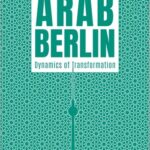By Amro Ali:
 In a bustling area of the 2,300 year-old Alexandria, Egypt, lies the middle class suburb of Cleopatra
In a bustling area of the 2,300 year-old Alexandria, Egypt, lies the middle class suburb of Cleopatra
Hammamat, meaning Cleopatra’s Baths, named after the legendary Cleopatra VII and where she once ruled. She was the last Queen Pharaoh who came to understand, albeit belatedly, that power can be vanquished at a heavy price; the rest is history. Today, overlooking the Mediterranean Sea, Cleopatra Hammamat is a beautiful, harmonious, and vibrant area – Muslim and Christian traders work side by side, men play their checkers in the coffee houses, soccer matches bring the streets to a standstill. And, despite the extremely difficult economic situation, Egyptians are still willing to express their renowned warm sense of humour at life’s challenges.
Cleopatra Hammamat (or Cleopatra for short) rarely made the headlines – until Sunday, June 6, when fate propelled it back onto the world map. Two plain-clothed policemen entered an internet cafe near the beach, seizing 28-year-old Khalid Saeed and smashing his head against a marble shelf, dragging him outside, and brutally beating and kicking him to the ground. Saeed pleaded for them to stop, but the police shoved him into a car in which he died en route to the Sidi Gaber police station. Afterwards, his lifeless body was brought back to the café and dumped. With Saeed’s death, a Pandora’s Box had been opened.
Shortly afterwards Saeed’s mangled face, photographed in the morgue, was uploaded for the world to see. The incident sparked off a public outcry, with daily protests against the police in Alexandria and Cairo. Numerous Facebook groups like “My Name is Khalid Saeed” popped up, attracting over 377,000 supporters and inciting further anti-police and anti-government demonstrations. The topic dominated talk shows with maverick host Amr Adib bewailing: “Where has the trust in our system gone?”
The US State Department, often turning a blind eye to the pro-US regime’s excesses, voiced their concern to the Mubarak government and appealed for a transparent investigation. Under pressure, the Ministry of Interior reopened the case: the country’s top coroner, like an Egyptologist retrieving a mummy from the Earth, ordered Saeed’s corpse to be exhumed for a second autopsy to be undertaken by forensic experts.
The coronial findings stated that Saeed died by swallowing a packet of marijuana and hence choked to death. Human rights groups were quick to dismiss the report as another pro-government cover-up. Even then, not how, but why, Saeed died of asphyxiation was brushed under the carpet. In spite of the conflicting witness accounts, what is clear is that police behaviour created the conditions that contributed to Saeed’s death.
As the Cairo based Al-Nadeem Centre for the Rehabilitation of Victims of Violence and Torture rightly questioned: “Why did undercover policemen go to arrest Khalid?” Did they have an arrest warrant? If the Ministry of Interior’s statement claiming that Khalid was wanted on two counts is true, why didn’t the police go to his house and arrest him? They needed only to turn up in uniform, with an arrest warrant.”
Saeed was a familiar face in the Cleopatra area. You could spot him on the corniche with friends, and in the same internet cafe that I would frequent. Assalamu Allaikum (Peace be upon you) was our usual communication when we crossed paths. Like many of the young men who seek escapism from Egypt’s harsh realities of high unemployment and social immobility, Saeed’s drug use was not unknown. Yet as Hassan Nafaa of the independent Al-Masr Al Youm (Egypt Today) emphasised: “[Saeed] was still a citizen with full rights. Even if he was carrying marijuana, he should have been arrested in a way that respects his humanity and safeguards his rights. If he broke the law, he should have been given a fair trial and punished accordingly if proven guilty.”
In the aftermath of his death, Saeed was transformed into the unifying poster-child of Egypt’s disparate reform movements, and has endowed the former United Nations nuclear chief and Nobel Peace Prize winner, Mohamed ElBaradei, with a springboard to run in next year’s presidential elections. Although his high profile visit to pay condolences to Saeed’s family and leading peaceful demonstrations was a feat in bolstering Egyptian hope for reform, it remains to be seen whether his words translate into political change.
The tragedy has exposed something bigger than Saeed. Under scrutiny are the loathed emergency laws that have been in place since the assassination of President Anwar Sadat in October 1981 – ironically, the eve of Saeed’s birth. These laws allow police to arrest and detain individuals without regard to the due process guaranteed under the criminal procedure code. Hence an ordinary citizen’s basic rights are restricted, police impunity becomes the norm, and a Saeed scenario is your outcome. It’s like the US PATRIOT Act on crack. Saeed has now been elevated to the status of the “emergency law martyr”. And now, Egypt’s security apparatus is showing signs of strain under the system it is supposed to uphold.
I’ve seen other signs of Egypt’s simmering frustration with its government. On a recent visit to Alexandria, I took the sentimental six-stop journey from Cleopatra Hammamat to see relatives in the suburb of Camp Chezar (Camp Caesar) where legend has it Julius Caesar first set up camp; Caesar’s despotism would eventually be his downfall.
The train sent me on a trajectory, back in time, through a land saturated in history, where the ruins of the past strangely reflect the narratives of the future. On this particular day, an old white-bearded man on board poignantly got up from his seat, gripping in his hand a copy of the Al-Ahram (The Pyramids) newspaper; its front cover displaying images of dead Palestinians from Israel’s occupation. Seemingly agitated by the newspaper’s images, he went on to openly denounce the Egyptian regime’s perceived complicity in Israel’s brutal occupation and the apathy of the Egyptian people before some 25 commuters. At one point, one of the passengers advised the old man to be quiet when a senior police officer boarded the train, yet the old man continued unrepentant. Many onboard came to his defence, with one man saying: “What is he saying that is wrong? He’s speaking the truth! Continue ya Hagg”, a title of respect given to those who have performed the Muslim pilgrimage to Mecca.
By the time the train reached the fifth station, the ancient Jewish district of Al Ibrahimiyya (named after the Patriarch Abraham), the old man, with a Moses-like solemnity rallying the crowds to beseech a Pharaoh to let his people go, was fired up more than ever. All the while, the commuters rallied behind him as the impromptu mouthpiece, finally venting their collective frustration. The police officer, who had been up until then cowering in the corner of the carriage, not bothering with the whole episode, meekly disembarked (I suspect this was not even his intended destination). Even the security organs, the lynchpin of the regime, are being further blunted as the tide of nationwide exacerbation at authoritarian rule grows. It struck me that the public agitation on the train was a microcosm of a larger Egypt on a fault line, with an apathetic regime that is losing its sense of orientation.
This is not the first time the Egyptian people have balked against an administration’s brutality. Observers are comparing the incident to the Denshawai Affair of 1906, when, on a hot June afternoon, five British officers entered the Egyptian village of Denshawai to go pigeon shooting. The angry villagers protested the shooting of their domesticated livelihood. One of the officers, in a Cheney-style moment, accidentally shot a female villager and set fire to their grain. The angry villagers retaliated and the British officers wounded five villagers – the exchange resulted in casualties on both sides. When the British authorities intervened, they had the choice between serving out justice or order. They purely chose the latter: 52 villagers were put on trial for premeditated murder, 32 were found guilty with four hanged, and the rest were flogged. The Egyptian public was up in flames. The event would mark a dramatic turning point in the British occupation of Egypt and see the Empire’s sun set over the Nile.
Thus, Saeed’s tragedy is Egypt’s tragedy. A young man, neither a political activist nor religious radical, but an ordinary Egyptian whose accused actions could not in any way warrant his lynching. Saeed was someone’s son, someone’s brother, someone’s friend, someone’s neighbour, someone’s customer, and if not for what had happened, someone’s future. Saeed was, in the local vernacular, a son of Cleopatra. Yet the system that was supposed to protect him and give him his rights, took away those rights by taking away his life. Moreover, the fact that his corpse needed to be exhumed (some accounts say twice!) is revelatory of further decay in a system that should have addressed the cause of death before laying Saeed to rest in peace.
While it will continue to be debated if the recent tragedy turns out to be a 21st century Denshawai moment for Egypt, nonetheless, like Iran’s Neda Agha-Soltan, Saeed’s battered face has become a powerful symbol and rallying point for those who are craving reform in Mubarak’s Egypt. If anything, it is one extra nail in the coffin of the ever-widening gulf between the ruler and ruled. While the moderation of the Egyptian people have often saved the country from the worst excesses (unlike Iraq or Iran), yet one only hopes that the constant calls for liberalisation and human rights improvements are heeded, for without it, one needs to pray that the next Cleopatra’s Baths episode does not turn into a Cleopatra’s bloodbath.
Fifty years after the Denshawai incident, following the 1956 Suez War and the humiliating political defeat for the UK and France, Egyptian journalist Muhammed Hassanein Heikal would describe it as the “pigeons of Denshawai have come home to roost”. Yet what the Egyptian establishment maybe forgetting – and the descendants of the Denshawai village can tell you today – is that pigeons come home to roost more than once.
Article first appeared in
http://www.onlineopinion.com.au/view.asp?article=10663&page=0






